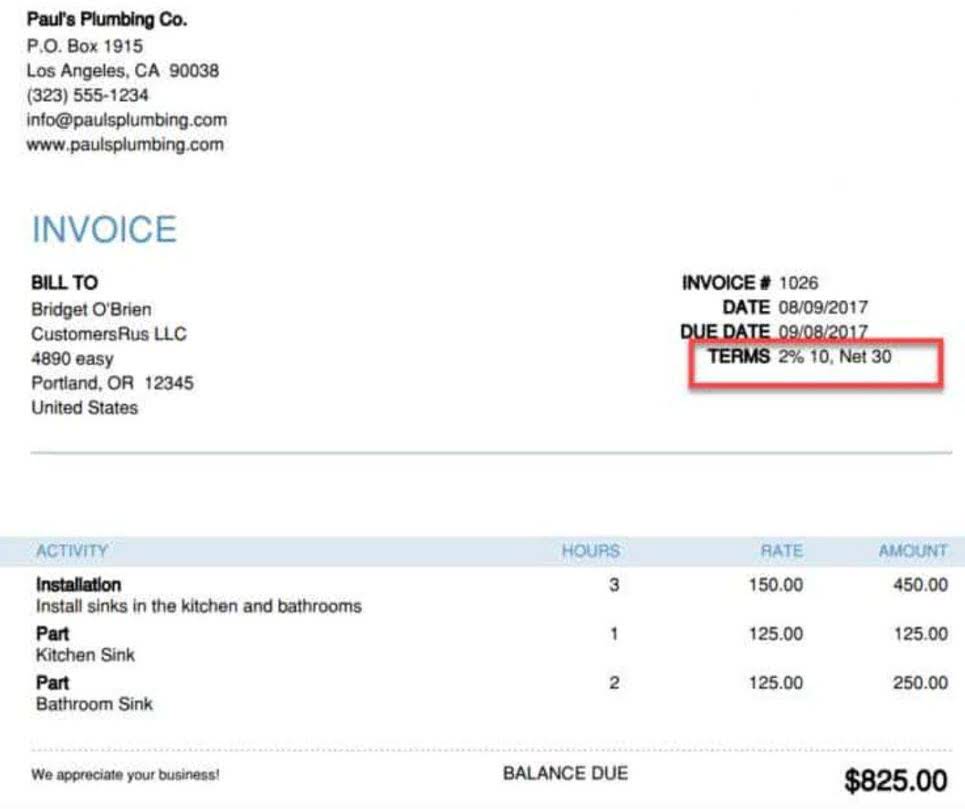
Retained earnings are the profits or net income that a company chooses to keep rather than distribute it to the shareholders. Revenue, sometimes referred to as gross sales, affects retained earnings since any increases in revenue through sales and investments boost profits or net income. As a result of higher net income, more money is allocated to retained earnings after any money spent on debt reduction, business investment, or dividends. Retained earnings are a clearer indicator of financial health than a company’s profits because you can have a positive net income but once dividends are paid out, you have a negative cash flow.
- Finally, the closing balance of the schedule links to the balance sheet.
- Retained Earnings are reported on the balance sheet under the shareholder’s equity section at the end of each accounting period.
- Such items include sales revenue, cost of goods sold (COGS), depreciation, and necessary operating expenses.
- Retained Earnings on the balance sheet measures the accumulated profits kept by a company to date since inception, rather than issued as dividends.
- As a result, any factors that affect net income, causing an increase or a decrease, will also ultimately affect RE.
- Prolonged periods of declining sales, increased expenses, or unsuccessful business ventures can lead to negative retained earnings.
Setting up a Statement of Retained Earnings
It’s the number that indicates how much capital you can reinvest in growing your business. For example, if you’re looking to bring on investors, retained earnings are a key part of your shareholder equity and book value. This number’s a must.Ultimately, before you start to grow by hiring more people or launching a new product, you need a firm grasp on how much money you can actually commit. A company’s equity reflects the value of the business, and the retained earnings balance is an important account within equity.
Find your net income (or loss) for the current period

Lenders are interested in knowing the company’s ability to honor its debt obligations in the future. Lenders want to lend to established and profitable companies that retain some of their https://www.bookstime.com/ reported earnings for future use. Even if the company is experiencing a slowdown in business activities, it can still make use of the retained earnings to pay down its debt obligations.
Additional Paid-In Capital
The main difference between retained earnings and profits is that retained earnings subtract dividend payments from a company’s profit, whereas profits do not. Where profits may indicate that a company has positive net income, retained earnings may show that a company has a net loss depending on the amount of dividends it paid out to shareholders. On the other hand, though stock dividends do not lead to a cash outflow, the stock payment transfers part of the retained earnings to common stock. For instance, if a company pays one share as a dividend for each share held by the investors, the price per share will reduce to half because the number of shares will essentially double. Because the company has not created any real value simply by announcing a stock dividend, the per-share market price is adjusted according to the proportion of the stock dividend. A statement of retained earnings shows changes in retained earnings over time, typically one year.
Or they can hire new sales representatives, perform share buybacks, and much more. Well-managed businesses can consistently generate operating income, and the balance is reported below gross profit. Businesses take on expenses to generate more revenue, and net income is the difference between revenue (inflow) and expenses (outflow).
The statement of retained earnings is mainly prepared for outside parties such as investors and lenders, since internal stakeholders can already access the retained earnings information. Some of the information that external stakeholders are interested in is the net income that is distributed as dividends to investors. The retained earnings for a capital-intensive industry or a company in a growth period will generally be higher than some less-intensive or stable companies. This is due to the larger amount being redirected toward asset development.

Impact on your credit may vary, as credit scores are independently determined by credit bureaus based on a number of factors including the financial decisions you make with other financial services organizations. If your business recorded a net profit of, say, $50,000 for 2021, add it to your beginning retained earnings. Given that the desired ending inventory levels are 25% of the following month’s projected COGS, we can start by calculating the projected COGS for March Year 2. We’ll use the information provided for December Year 1 and the first quarter of Year 2. A SWOT analysis examines a firm’s technical, human, and financial resources. It doesn’t limit itself to specific indices or averages like the Dow Jones or S&P 500.Therefore, option d, “all issues traded on all exchanges,” is the correct answer.

What is Profit Margin? A Simple Introduction
Retained earnings are the portion of a company’s cumulative profit that is held or retained and saved for future use. Retained earnings could be used for funding an expansion or paying dividends to shareholders at a later date. Retained earnings are related to net (as opposed to gross) income because they are the net income amount saved by a company over time. Profits give a lot of room to the business owner(s) or the company management to use the surplus money earned. This profit is often paid out to shareholders, but it can also be reinvested back into the company for growth purposes. Retained earnings are the cumulative net earnings or profits of a company after accounting for dividend payments.
- This profit is often paid out to shareholders, but it can also be reinvested back into the company for growth purposes.
- Your Bench account’s Overview page offers an at-a-glance summary of your income statement and balance sheet, allowing you to review your profitability and stay on top of your cash flow from month to month.
- In simple words, the retained earnings metric reflects the cumulative net income of the company post-adjustments for the distribution of any dividends to shareholders.
- That’s distinct from retained earnings, which are calculated to-date.
- For our retained earnings modeling exercise, the following assumptions will be used for our hypothetical company as of the last twelve months (LTM), or Year 0.
- You can find the amount on the balance sheet under shareholders’ equity for the previous accounting period.
- Therefore, the company must balance declaring dividends and retained earnings for expansion.

Accordingly, companies with high retained earnings are in a strong position to offer increased dividend payments to shareholders and buy new assets. Retained earnings allow businesses to fund expensive asset purchases, add a product line, or buy a competitor. Your firm’s strategy should influence how you choose to use retained earnings and cash dividend payments. retained earnings statement The process of calculating a company’s retained earnings in the current period initially starts with determining the prior period’s retained earnings balance (i.e., the beginning of the period). When a company consistently retains part of its earnings and demonstrates a history of profitability, it’s a good indicator of financial health and growth potential.
- You can find the beginning retained earnings on your balance sheet for the prior period.
- If an investor is looking at December’s financial reporting, they’re only seeing December’s net income.
- Retained earnings are affected by any increases or decreases in net income and dividends paid to shareholders.
- It’s important to note that the balance of trade is just one component of a country’s overall balance of payments, which also includes capital flows, foreign direct investment, and other financial transactions.
- These earnings are considered “retained” because they have not been distributed to shareholders as dividends but have instead been kept by the company for future use.
- They are a type of equity—the difference between a company’s assets minus its liabilities.

Thank you for your sharing. I am worried that I lack creative ideas. It is your article that makes me full of hope. Thank you. But, I have a question, can you help me? https://accounts.binance.com/pt-PT/join?ref=P9L9FQKY
Can you be more specific about the content of your article? After reading it, I still have some doubts. Hope you can help me.
Your point of view caught my eye and was very interesting. Thanks. I have a question for you.
Thank you, your article surprised me, there is such an excellent point of view. Thank you for sharing, I learned a lot.
I don’t think the title of your article matches the content lol. Just kidding, mainly because I had some doubts after reading the article. https://accounts.binance.com/sk/register?ref=OMM3XK51
Your point of view caught my eye and was very interesting. Thanks. I have a question for you.
Thank you for your sharing. I am worried that I lack creative ideas. It is your article that makes me full of hope. Thank you. But, I have a question, can you help me?
Thanks for sharing. I read many of your blog posts, cool, your blog is very good. https://www.binance.com/sv/join?ref=PORL8W0Z
Thank you for your sharing. I am worried that I lack creative ideas. It is your article that makes me full of hope. Thank you. But, I have a question, can you help me?
united kingdom pokies online real money, top ten online casinos united states and online pokies united states no deposit signup bonus, or las
vegas usa casino $100
My site – bingo for computer (Caitlin)
wette spiel
Also visit my web blog: Wett Tipps Basketball Heute;
https://Basketball-Wetten.Com/,
kombiwette pferderennen
Feel free to visit my page: german darts masters wetten
quote von halbzeit endstand wetten – Sheena – dass
live wett tipps
My website – Bonus Sportwetten
tipps sportwetten heute
Stop by my web site: sichere Wetten Finden
kombiwetten absichern
My webpage … comment-129261 (Earnestine)
alle wettseiten
Feel free to surf to my blog Wettanbieter österreich
pferderennen magdeburg wetten
my website; wett vorhersagen heute
ungarn schweiz wetten
Here is my blog post :: sportwetten ohne oasis
gratiswette code ohne einzahlung
my blog: top sportwetten quoten (Galen)